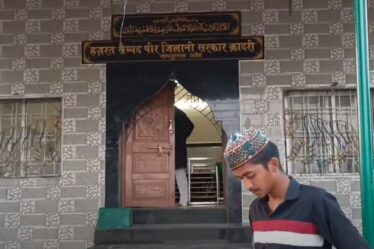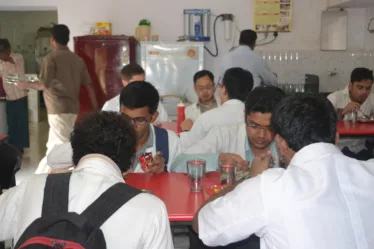Last week, a previously healthy 50-year-old man died in our hospital following a massive stroke. A CT scan revealed a deep intracerebral hemorrhage.
Sudden death evokes a torrent of emotions—shock, denial, frustration, anger, and grief—not necessarily in that order. Shortly after the patient’s death in our ICU, a furious mob of nearly 50 people bypassed hospital security, stormed into the stroke unit, and began shouting and abusing the residents and nurses. The crowd refused to accept that brain hemorrhages are often fatal, with limited medical interventions available to alter outcomes. Tempers flared, and verbal spats threatened to escalate into physical violence. It took the persuasive counseling of a young faculty member to defuse the situation and disperse the mob.
We later learned that the patient had visited the hospital a day earlier, complaining of giddiness. An emergency resident examined him, checked his vital signs, performed an ECG, and found no abnormalities. She advised him to see an ENT specialist the next day and prescribed medication for vertigo. However, within 24 hours, the patient’s condition deteriorated—his face sagged, his arm became limp, and his leg lost power. He rapidly became drowsy, his breathing grew labored, and he required emergency hospitalization. Despite ventilatory support and medications to reduce brain swelling, he succumbed within hours.
The mob returned the following night. Though the doctors had ordered a post-mortem, the crowd continued shouting, disrupting hospital operations and drawing the attention of outpatients, whose curiosity made it even harder for doctors to function. Thankfully, calmer voices prevailed, and the crowd eventually dispersed.
Over the past few years, doctors have observed a troubling trend—patients and their relatives are becoming increasingly impatient, distrustful, and aggressive. The traditional doctor-patient relationship, once grounded in mutual trust and respect, is being eroded and replaced by a transactional provider-client dynamic.
There is nothing wrong with patients being aware of their rights or developing a healthy skepticism toward medical science. Doctors should welcome informed discussions, patient questions, and scrutiny of clinical decisions. They must also recognize that grieving relatives, faced with sudden loss, may react irrationally.
But what happens when this frustration turns into outright violence? What should doctors do when they are abused, physically threatened, or when hospital property is vandalized? While attacking medical personnel is now a non-bailable offense, punishable by up to three years in prison and a fine of Rs. 50,000, legal deterrents alone seem ineffective. Public hospitals often lack adequate security, leaving doctors vulnerable. In response, young doctors, their patience frayed, sometimes escalate conflicts by raising their voices—a dangerous strategy when dealing with volatile crowds. Such incidents occur with alarming regularity in emergency departments, ICUs, and even general wards, where unchecked hordes of relatives and well-wishers flood sensitive hospital areas.
Ethicists argue that while doctors deserve protection to perform their duties effectively, hospitals must also be more accountable to the public. Administrators believe that open communication, transparent care, and keeping families informed can help de-escalate tensions. However, young doctors counter that, despite their best efforts, they frequently encounter hostility, confrontation, and even physical violence.
Unrealistic patient expectations play a significant role in these altercations. Many incidents stem from dissatisfaction with medical services or the failure to meet explicit and implicit demands. Public hospitals, strained by limited resources, struggle to meet patient needs. A handful of overworked residents manage overcrowded wards, long queues frustrate patients, and doctors navigate a chaotic, inefficient system. In such an environment, it is hardly surprising that tempers flare, sometimes with tragic consequences.
All healthcare professionals have the right to work in an environment free from harassment and violence. Yet, hospitals are no longer just places of healing—they have also become sites of abuse, intimidation, and, in extreme cases, physical assault. Hospitals are no longer “Great Place to Work, Great Place to Receive Care and a Great Place to Practice Medicine”. They are also places to be abused, insulted, kicked, bitten, punched, knifed, hit, stabbed or spat at.
It is time to ask: How can we restore the sanctity of healthcare spaces and ensure that doctors can practice medicine without fear?


Healthcare givers working in public and privte hospitals frequntly face this almost everywhere in India.Sudden and young deaths are often the reason.Fail to understand the reaction frequently shown by the mob or relatives is for what!!!What do they achive by all the act? Infact I dont think that the close family of the diseased is in the frame of mind to even think or plan such outrageous demostration. There is always certain notorious element in the society who take advantage of the situation and react violantly.
Such like incidents indeed make the doctors more careful while dealing with a critically ill.I agree to the suggestion that honest, frequent and clear communication between both the sides should make a difference.
Lastly doctors are humans and to err is human.
Dear Sir
Your blog touches upon a problem that has been facing us here without any answer for quite some time. The hired security are no help and the negotiating skills of the poor senior resident on duty have been tried to the limit.
People have a notion that medical science has progressed so much that a cure is available for everything and any complication arising out of treatament has to be the doctor's fault. Any counselling to the contrary is met with sullen resentment.
Violent reaction to grief is the exception rather than the rule but when it occurs makes us cynical of the society that we strive to serve.
Regards
Pravas
Lapped it up! Very realistic and matter of factly. Made an interesting reading!
Akash
Very well-written. Very comprehensive.
Dear sir,
Such incidents have become a frequent happening in all hospitals. I agree that over time the doctor patient relation has deteriorated. Patients can not be entirely blamed for the same. to some extent the commercilisation of the medical profession, increased medical costs ,lack of communication make them more demanding.
With half knowledge from the internet and the other sources , they fail to realise that doctor attempts a solution to the problem, but there are still many instances when even in the best settings life cannot be saved. Todays times of india, has a similar story to share were relatives ? friends failed to understand that a previously healthy person can die suddenly ,without the doctor being able to help much.
law does not help much . I agree that we can attempt to reduce incidents by a clear and detailed communication of patients condition.
Hope that it may help to some extent….
Respected Sir,
First of all, thank you for enlightening us on this day-to-day commonly encountered but an important issue related to our clinical practice. I totally agree with your view.
Although almost all of us take care to explain clinical profile of patient needing hospitalization in simple clinincal language; sometimes relatives / friends may get a false positive or negative impression from the conversation about the possible prognosis of the patient.
Also, the mob mentality in the adverse clinical event may turn the situation in wrost possible way.
Even though legally speaking violence of this nature is punishable; attending doctors have to face the consequences if things go wrong.
Definitely in recent times, in big cities (like Pune) IMA has come forward to handle such situations; offering its forum for settling any disputes of such kind.
But still its a long way to go to arrive at a full proof solution.
Thanks.
In practice, I've obseved that many patients resort to belligerence in order to avoid payment of hospital dues when the outcome is unfavorable or suoptimal.
I am currently doing research on methods to reduce or prevent such violence. I believe proper de-escalation training and self defense training can make a difference. The question is one of training the patient care providers and all that support them.